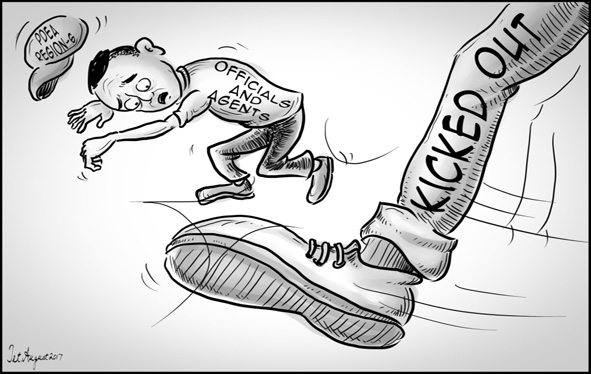
[av_one_full first min_height=” vertical_alignment=” space=” custom_margin=” margin=’0px’ padding=’0px’ border=” border_color=” radius=’0px’ background_color=” src=” background_position=’top left’ background_repeat=’no-repeat’ animation=”]
[av_heading heading=’ EDITORIAL’ tag=’h3′ style=’blockquote modern-quote’ size=’30’ subheading_active=’subheading_below’ subheading_size=’15’ padding=’10’ color=” custom_font=”][/av_heading]
[av_image src=’http://www.panaynews.net/wp-content/uploads/2017/08/editorial-cartoon-for-aug24.jpg’ attachment=’115075′ attachment_size=’full’ align=’center’ styling=” hover=” link=” target=” caption=” font_size=” appearance=” overlay_opacity=’0.4′ overlay_color=’#000000′ overlay_text_color=’#ffffff’ animation=’no-animation’][/av_image]
[av_textblock size=’18’ font_color=” color=”]
TO AVOID a repeat of the P6.4-billion shabu smuggling case through the Port of Manila, a proposal has been put forward – prior inspection abroad of all shipments destined for the Philippines.
It makes sense, really. All merchandise imports should be physically examined and valued at the port of origin before the shipment leaves for the Philippines. This is one sure way to prevent the entry of illegal drugs and other contraband into the country.
Under House Bill 6220 which calls for “the compulsory advance clearance” of all foreign cargoes headed for the Philippines, the exact nature of all Philippine-bound commodities must be checked, to include their quality, quantity and prices, before these are put in containers and loaded onto ships.
The suggestion is actually not new. According to the Office of the United States Trade Representative, “governments around the world, primarily in developing and least developed countries, require pre-shipment inspection to compensate for the inadequacies in Customs and other administrative structures.”
Based on existing World Trade Organization standards, this is how pre-shipment inspection is usually carried out by independent service providers:
First, pre-shipping physical inspection of goods is performed in the country of export, for the purpose of establishing the precise nature of the goods.
Second, the invoices and other supporting documents are scrutinized for an accurate valuation and the assignment of the applicable global Customs tariff code, which are then used, along with the destination country’s published duty rates, to calculate the correct duties payable.
Third, a pre-inspection certification is then issued to importer, for use in supporting the payment of full duties upon arrival at the destination country.
Finally, the actual duty collected is compared with the certificate, and any discrepancy can be audited and rectified.
We see three groups of people that have historically resisted pre-shipment inspection – Customs officials who stand to lose hefty cuts from the usual mis-declaration or undervaluation of imports; dodgy traders who will be compelled to cough up the correct duties and taxes; and politicians moonlighting as padrinos of shady merchants.
Pre-shipment inspection is actually beneficial to everybody. Government will collect higher duties. Legitimate importers will avoid costly product defects and get shipments faster without having to haggle with corrupt Customs agents.
More importantly, mandatory pre-shipment inspection could be the antidote to systemic corruption at the Bureau of Customs.
[/av_textblock]
[/av_one_full]







